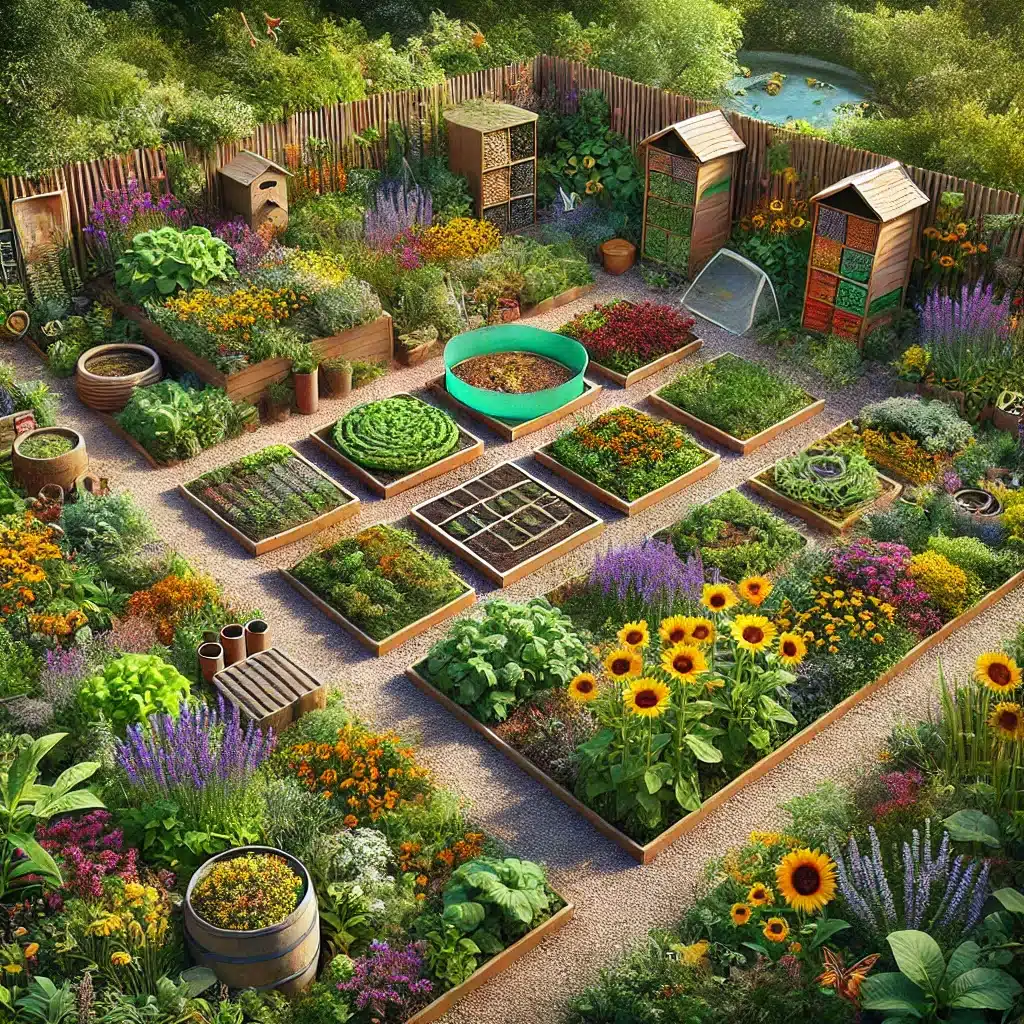Rainwater harvesting is the process of collecting and storing rainwater for later use. It is an environmentally friendly and sustainable practice that can help homeowners reduce their water bills and conserve water resources. Rainwater harvesting is especially beneficial for home gardens, as it provides a free and natural source of water for plants.
There are several methods of rainwater harvesting that homeowners can utilize for their home gardens. The most common method is to collect rainwater from the roof of the house. This can be done by installing gutters and downspouts that channel rainwater towards a storage tank or barrel. The collected rainwater can then be used to water plants in the garden.
Another method of rainwater harvesting for home gardens is to create a rain garden. A rain garden is a depression in the ground that is designed to capture rainwater runoff from the surrounding area. This water can then be absorbed by plants and soil in the garden, reducing the amount of water that flows into storm drains and sewers.
Rainwater harvesting can also be achieved by installing a rainwater harvesting system. These systems typically consist of a collection surface, such as a roof or a paved area, a storage tank or cistern, and a distribution system. The collected rainwater can be filtered and treated before being used for irrigation in the garden.
There are many benefits to rainwater harvesting for home gardens. One of the main benefits is that it helps homeowners reduce their water bills. By collecting and storing rainwater, homeowners can offset their reliance on municipal water sources for watering their gardens, saving money in the long run.
Rainwater harvesting also helps to conserve water resources. In many areas, water is a scarce and precious resource, and using rainwater for irrigation helps to reduce the demand for freshwater sources. By capturing rainwater, homeowners can reduce their environmental impact and contribute to water conservation efforts.
In addition to saving money and conserving water, rainwater harvesting can also benefit plants in the garden. Rainwater is free of chlorine and other chemicals typically found in municipal water supplies, making it a healthier option for plants. Rainwater is also soft water, which is better for plants than hard water.
Rainwater harvesting can also help to reduce erosion in the garden. When rainwater runoff is captured and stored, it prevents soil erosion and helps to retain moisture in the soil. This can improve the overall health and resilience of plants in the garden.
There are some considerations to keep in mind when implementing rainwater harvesting for home gardens. It is important to ensure that the water collected is clean and safe for irrigation. This can be achieved through proper filtration and treatment of the collected rainwater.
It is also important to size the rainwater harvesting system appropriately for the needs of the garden. The size of the storage tank or cistern should be large enough to capture and store an adequate amount of rainwater for irrigation purposes.
In addition, homeowners should be mindful of local regulations and guidelines for rainwater harvesting. Some areas may have specific requirements for rainwater harvesting systems, such as permits or inspections. It is important to research and comply with these regulations to ensure that the rainwater harvesting system is installed correctly.
Overall, rainwater harvesting is a sustainable and environmentally friendly practice that can benefit home gardens in many ways. By collecting and storing rainwater, homeowners can save money, conserve water resources, and improve the health of plants in the garden. With proper planning and implementation, rainwater harvesting can be a valuable addition to any home garden.

